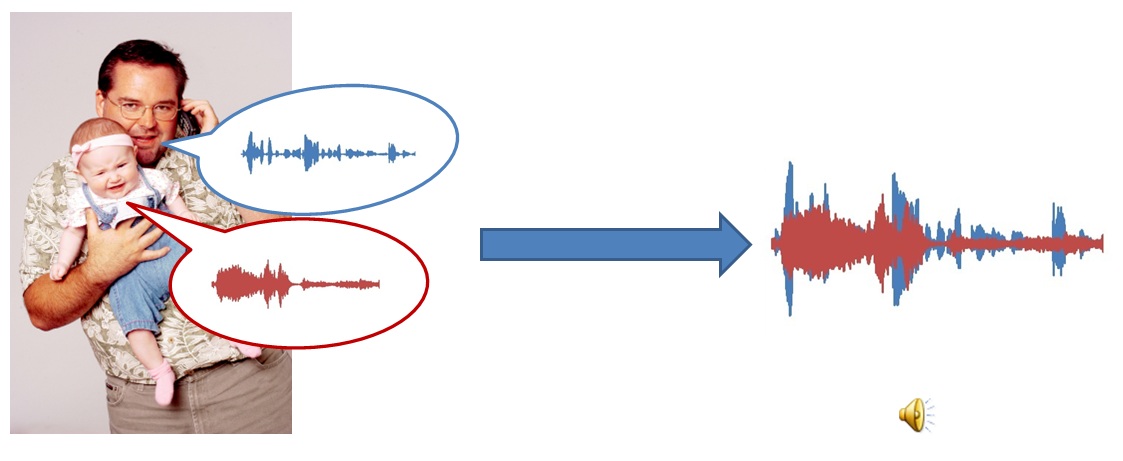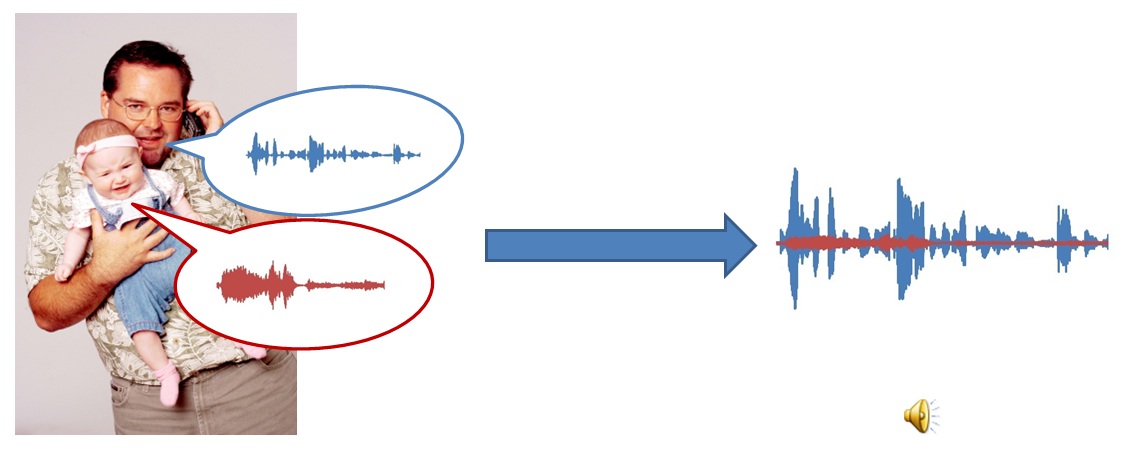Personalized Noise Reduction Software. Why Is It Different ?
- On November 19, 2016
- personal noise reduction
Background
Following our last post that revealed audio samples of the new personalized noise reduction technology, we keep getting requests to clarify the difference between the personalized noise reduction software and other noise reduction technologies that exists in the market today. In this post we will review a common scenario that will help visualized the difference. BTW, If you have kids, it will be easier for you to relate to the scenario.
The Scenario
Before the weekend your boss asks you to complete a presentation for an important meeting on Monday. In order to complete this presentation you have to make some calls to your colleagues to finalize the details of the presentation. But, unfortunately during one of your calls, your baby starts crying… This is what your colleague will hear…
Any noise reduction in the market today, would not attenuate the baby’s voice since:
1. The baby is physically near you so its voice can not be distinguished from your voice based on position/location parameters.
2. The baby’s voice is in the range of human voice so even the most aggressive noise reduction technology would have to treat the baby’s voice as a legitimate part of the call.
The Difference with Personalized Noise Reduction
The personalized noise reduction has a prior information that enables it to mark the baby’s voice as NOISE and not as a legitimate part of the call. This a prior information is the acoustic profile that was prepared in advance.
With personalized noise reduction this is what your colleague will hear…
Conclusion
The above scenario provides a straight forward visualization of the difference and the uniqueness of the personalized noise reduction technology. Of course, there are many other scenarios in which the existing noise reduction technologies fail to realize what should be considered as “noise” and what should be considered as a legitimate part of the call. As a result, the noise is not attenuated or in the worst case it might even get amplified. On the other hand, even under extreme conditions, the personalized noise reduction uses the acoustic profile in order to successfully separate your voice from the noise while attenuating the latter.
In the next posts, we discuss how to deploy this powerful technology out-of-the-box without initial effort or training, and how to evaluate the power of this technology.
[EDITED] This technology is now renamed to profile-based noise reduction.


